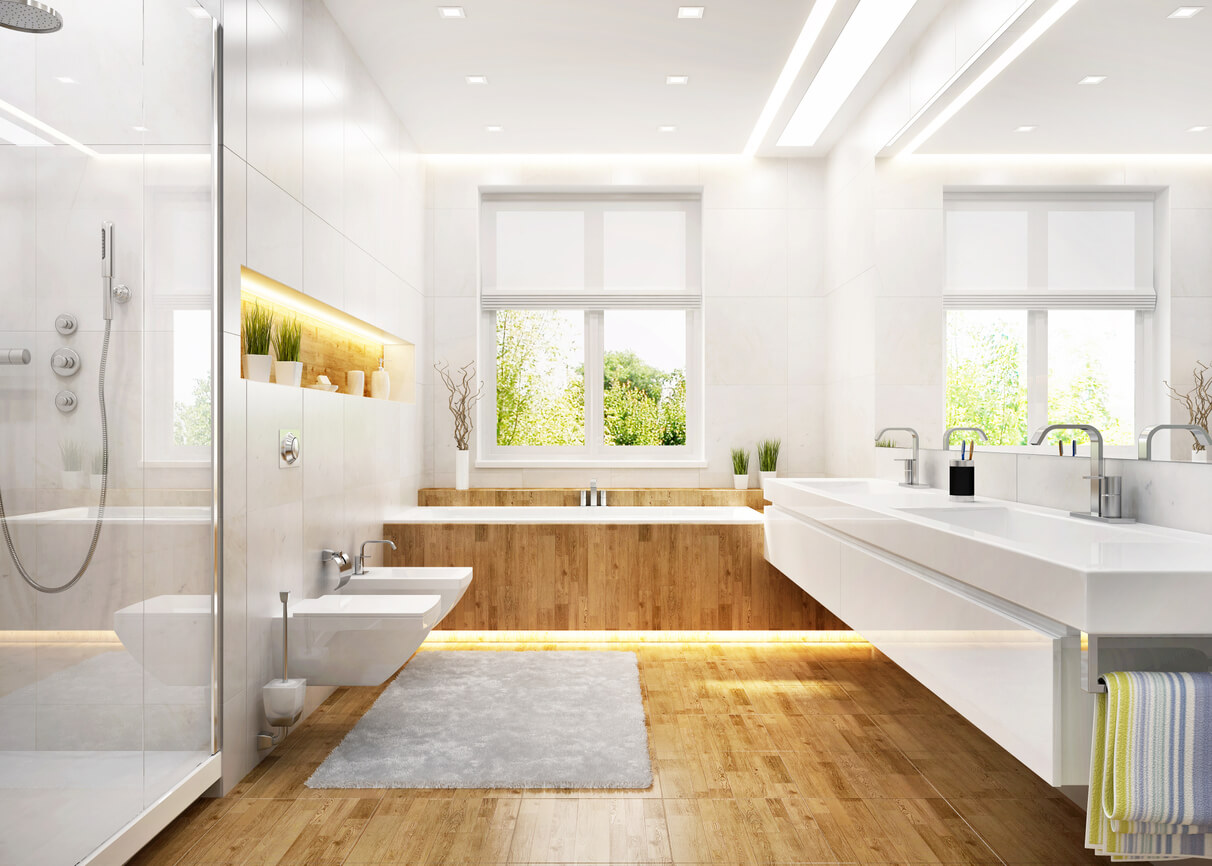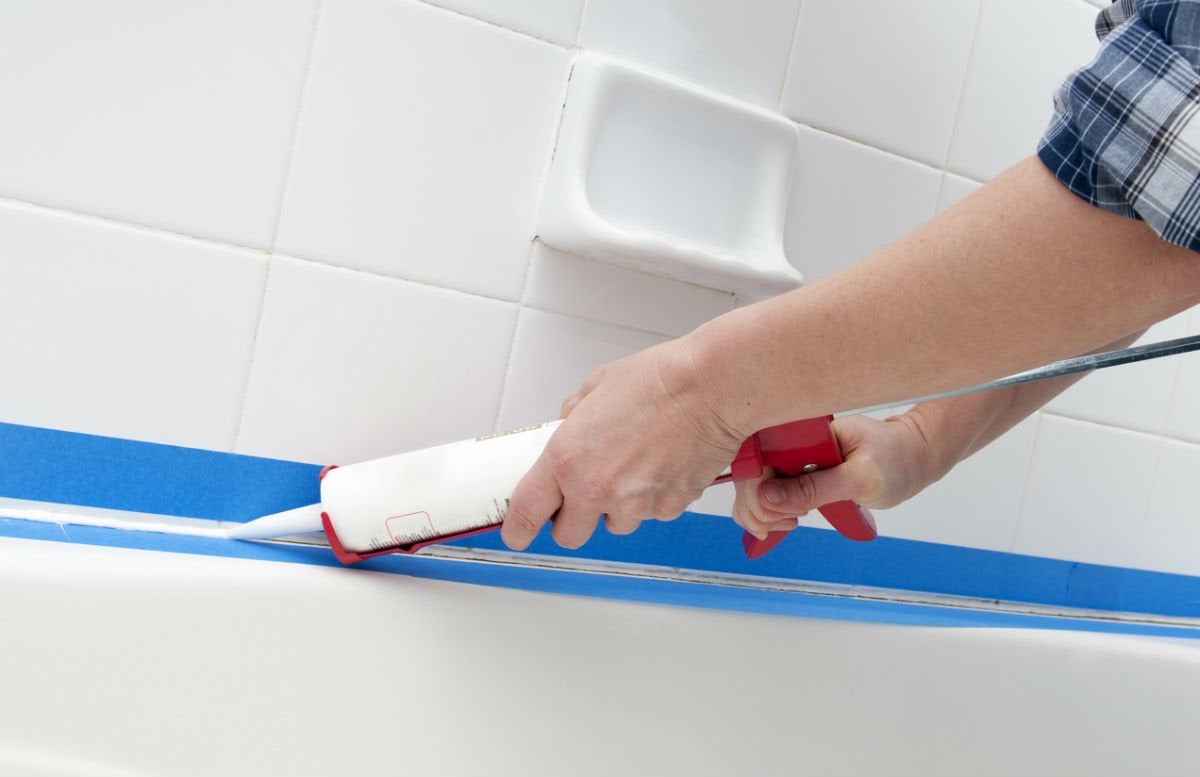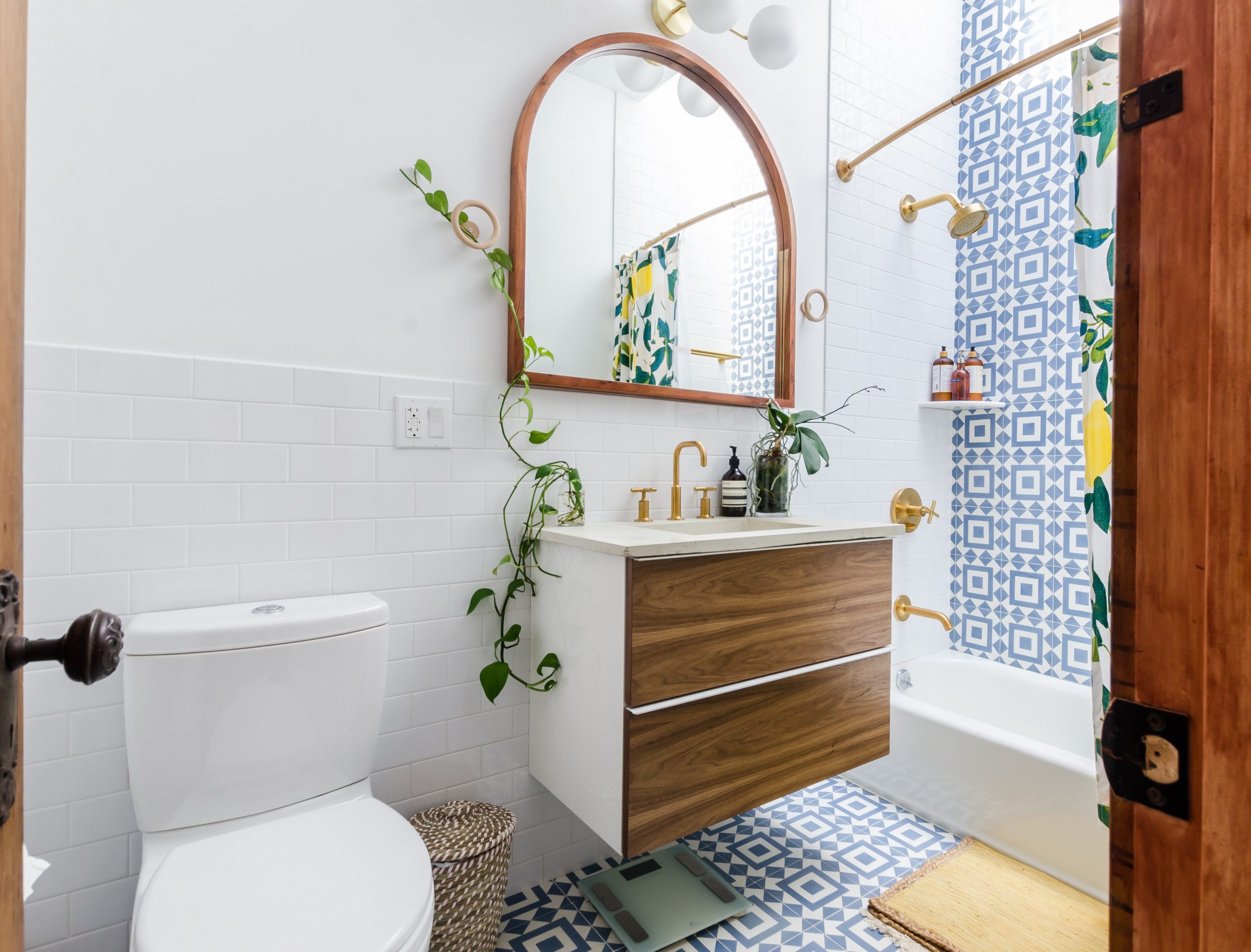1. Bathroom colours

For the most part, bathrooms are small spaces, so we recommend lighter, neutral colours (white, cream, beige and grey) to make the room look bigger. More delicate colours like pink and sky blue create a relaxing environment and work with various bathroom styles. Although darker colours can make the room look smaller, they contrast nicely with the white of the toilet, bathtub, cabinets, doors and tiles.
And here’s a little tip for makeup wearers: try to use neutral colours because brighter colours can reflect on your face and influence the way you put on makeup.
2. Lighting

Lighting is crucial for the bathroom since it is usually the space in the home with the least natural light.
Bathroom lighting should provide functionality and relaxation. The goal is to provide light to the entire bathroom without leaving any areas in shadow. Avoid using lights that are too bright as that will prevent you from seeing your beautiful face in the mirror. 300 lux will give you sufficient light for the whole room. If you are looking to create a little ambiance (for that candle-lit bath, for example), install spotlights or a dimmer.
Whatever your choice of lighting, opt for energy-saving LED bulbs which last longer and lower your electricity bill.
LED lights transform electricity into light without giving off heat and have a life expectancy of about 50,000 hours, compared with just 1,000 hours for an incandescent bulb. LED lights also have lower wattage: an 800-lumen LED bulb will consume 9-12 W, compared to 60 W for an incandescent lamp.
3. Order and cleanliness
For such a small space, the bathroom holds a lot of products and objects, so effective storage is crucial. You can use the cabinets or drawers under the sink. Or, install shelves above the toilet, bath or in the shower. You can also use a hamper or (if you have enough space) add an armoire. You can also install hooks to hang your towels and face cloths.
Since the bathroom is a place of cleaning, it goes without saying that cleanliness is the order of the day. If you like to entertain, remember that at some point your guests (or your date) are going to use the bathroom; the last thing you want is to leave a bad impression!
Clean the shower after each use to avoid the formation of mould. Don’t forget to clean under the bathmat as a great deal of dirt accumulates there without you noticing. Additionally, wash the toilet brush after each use by soaking it in bleach for a few minutes and then rinsing.
4. Ventilation
The bathroom is a space where moisture can quickly accumulate and lead to mould and other pollutants that pose a health risk and can damage paint, furniture, and drywall.
For these reasons, it is essential you keep the bathroom well-ventilated with a fan. This device extracts the used air and condensation from the bathroom and sends it outside your home through a pipe. Look for fans approved by the Home Ventilating Institute (HVI). This label guarantees that the performance of the fan has been assessed by an independent laboratory.
The fan is generally placed in the ceiling in the middle of the bathroom and should be activated when you are having a shower or taking a bath and left to run 20-60 minutes after you finish. If your bathroom has windows, leave them open to allow the used air to escape. If you (or your partner/roommates) constantly forget to turn the fan on (or off), you can also opt for a fan with a timer.
5. Caulking and sealing

Proper caulking is an important element in the bathroom. Not only does it prevent water from seeping into the walls or the floor (which could cause water damage), it just looks good! Damaged caulking can also lead to mould and damage the wall structure.
Caulking seals and waterproofs your bathtub, shower and tiles. Usually, the first signs of deterioration are stains that appear on the joints. Act quickly to repair them yourself with silicon bathroom or kitchen caulking (just follow the instructions in the manual) or through the services of a professional to avoid costly damage in the future.
We hope these tips will give you some ideas and inspiration for a functional, safe and relaxing bathroom. For more inspiration, check out:
House & Home: Bathrooms
Want to learn more? Visit our Interior Design resource centre for inspiration and tips to help you create the perfect living space. Or, get an online quote in under 5 minutes and find out how affordable personalized home insurance can be.



